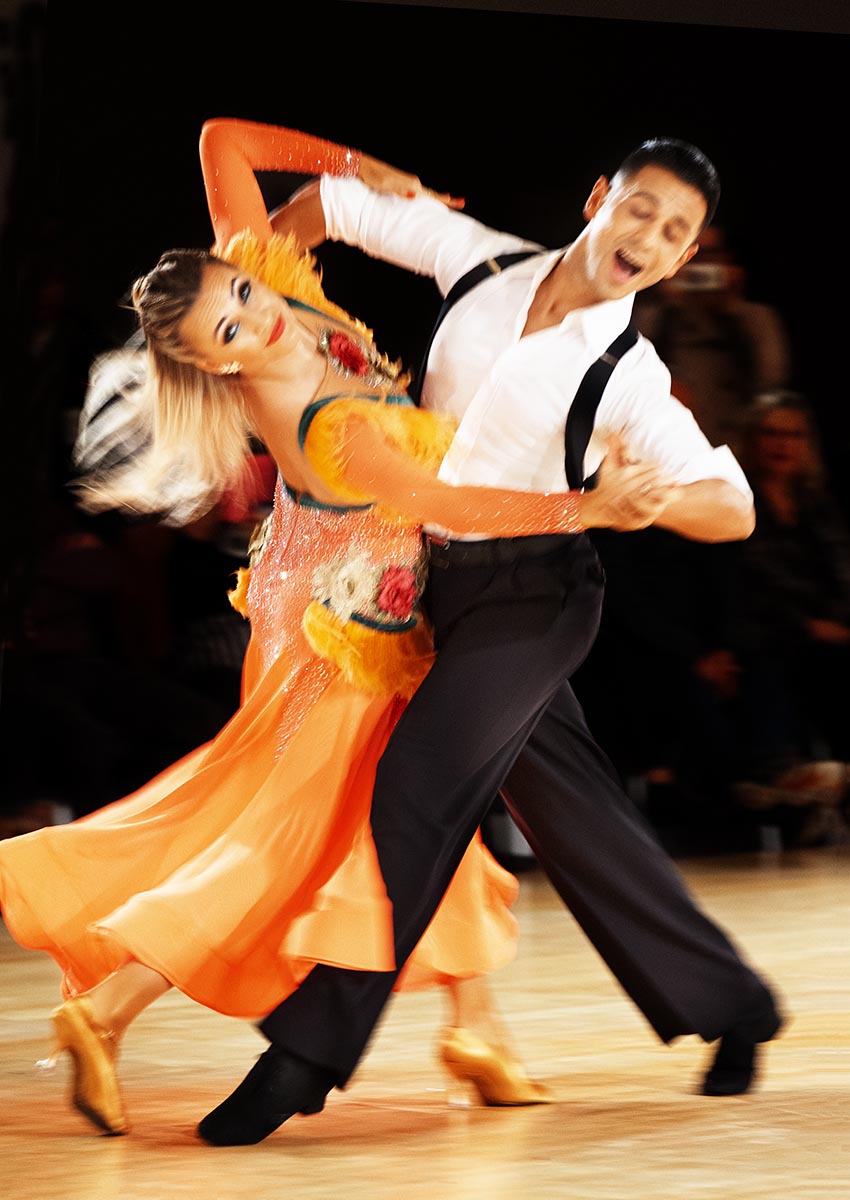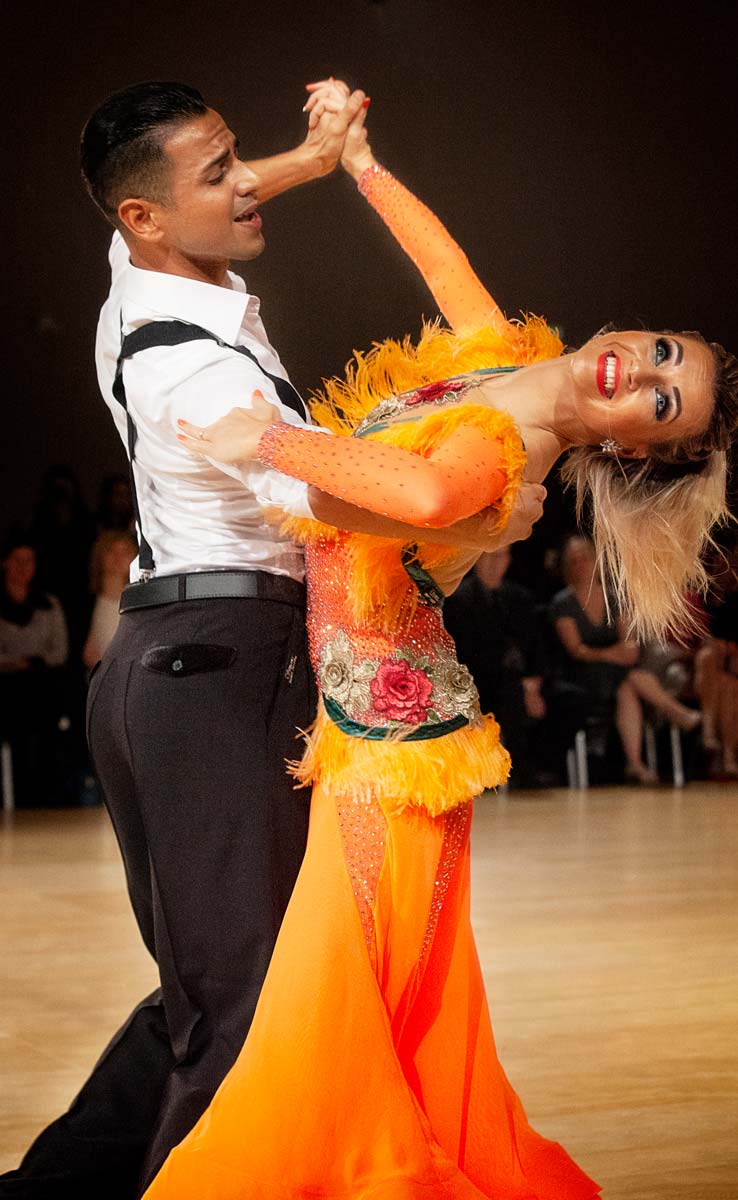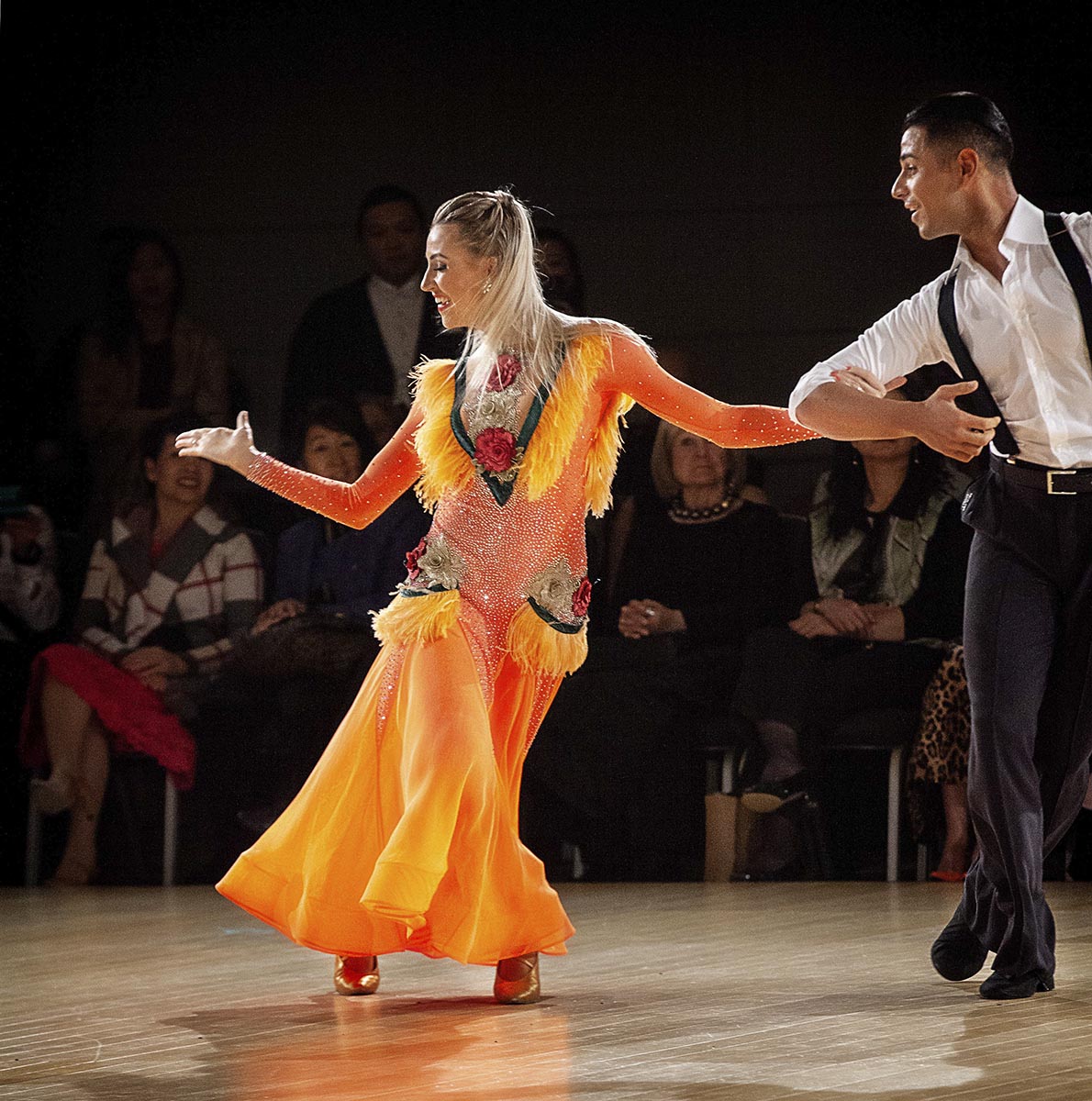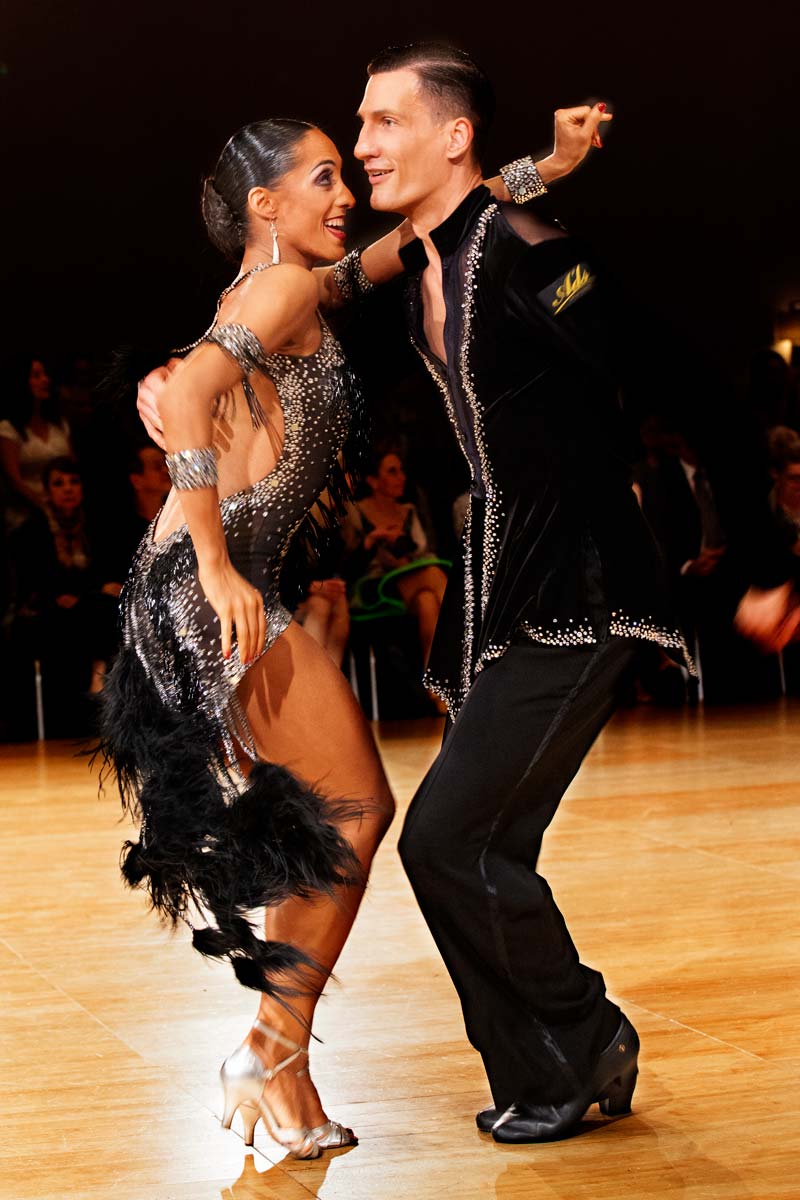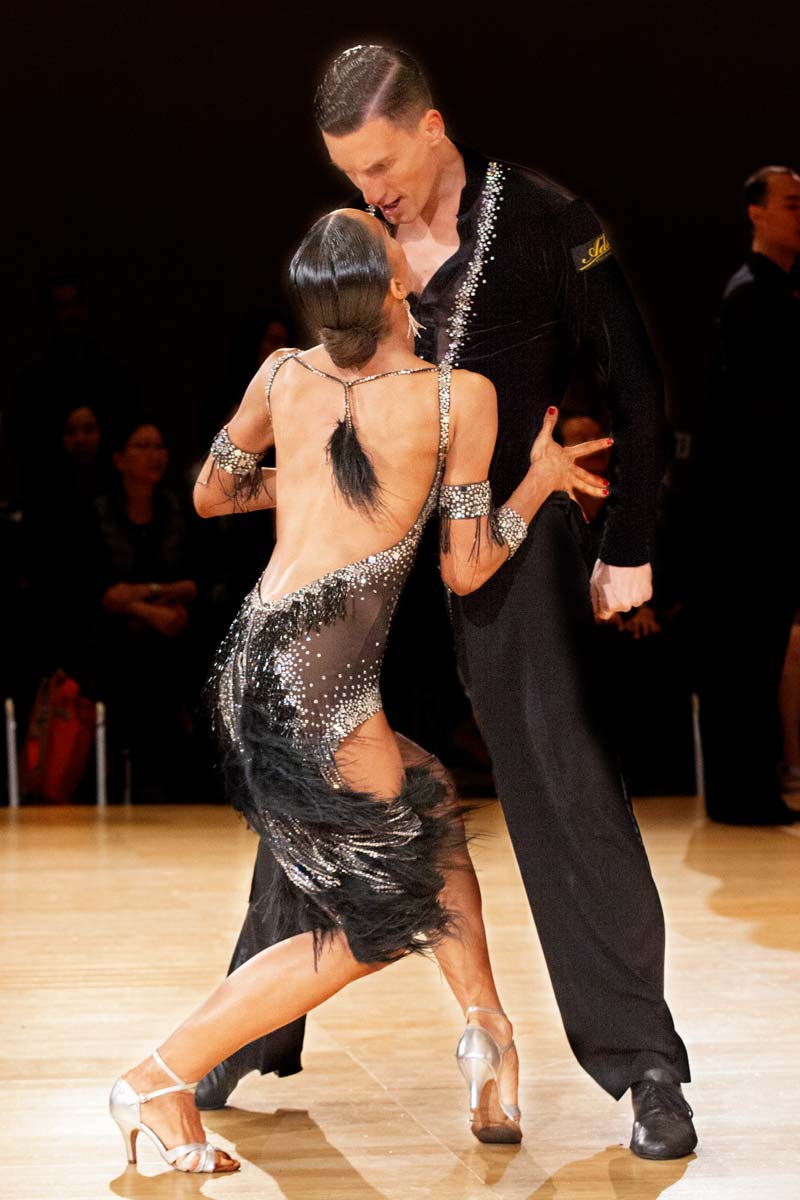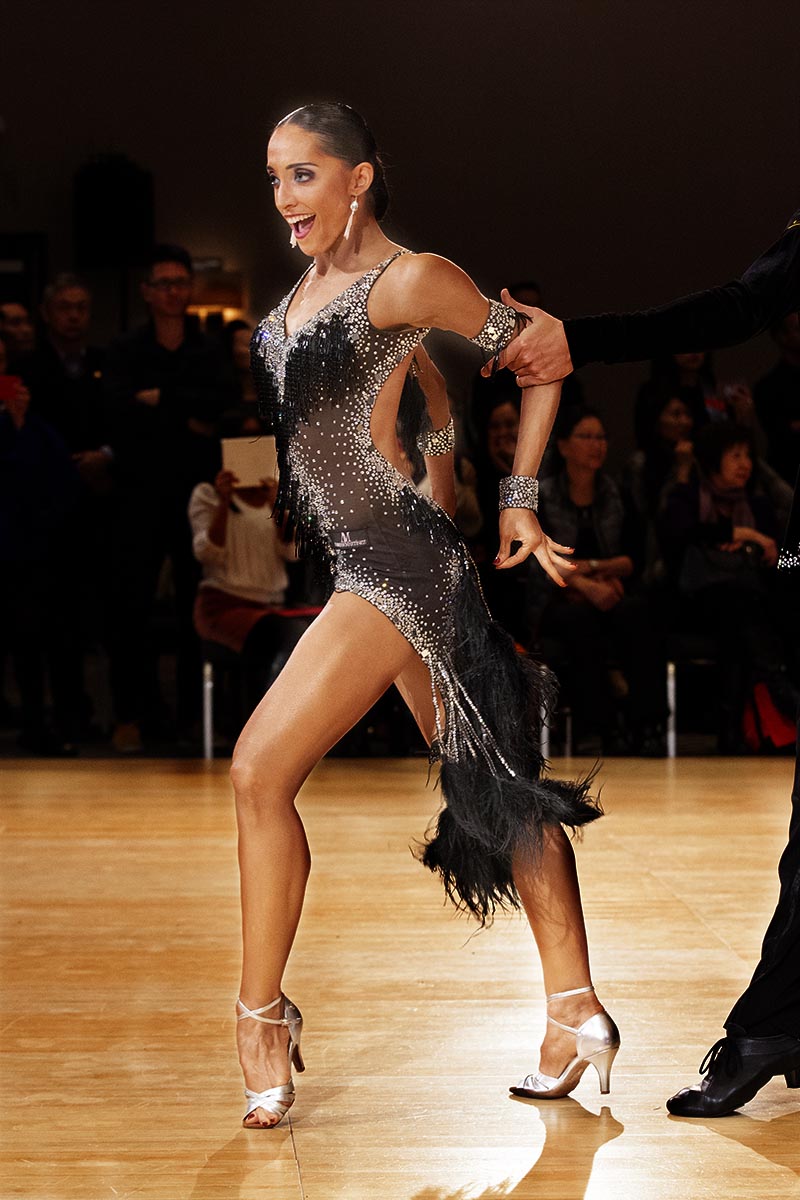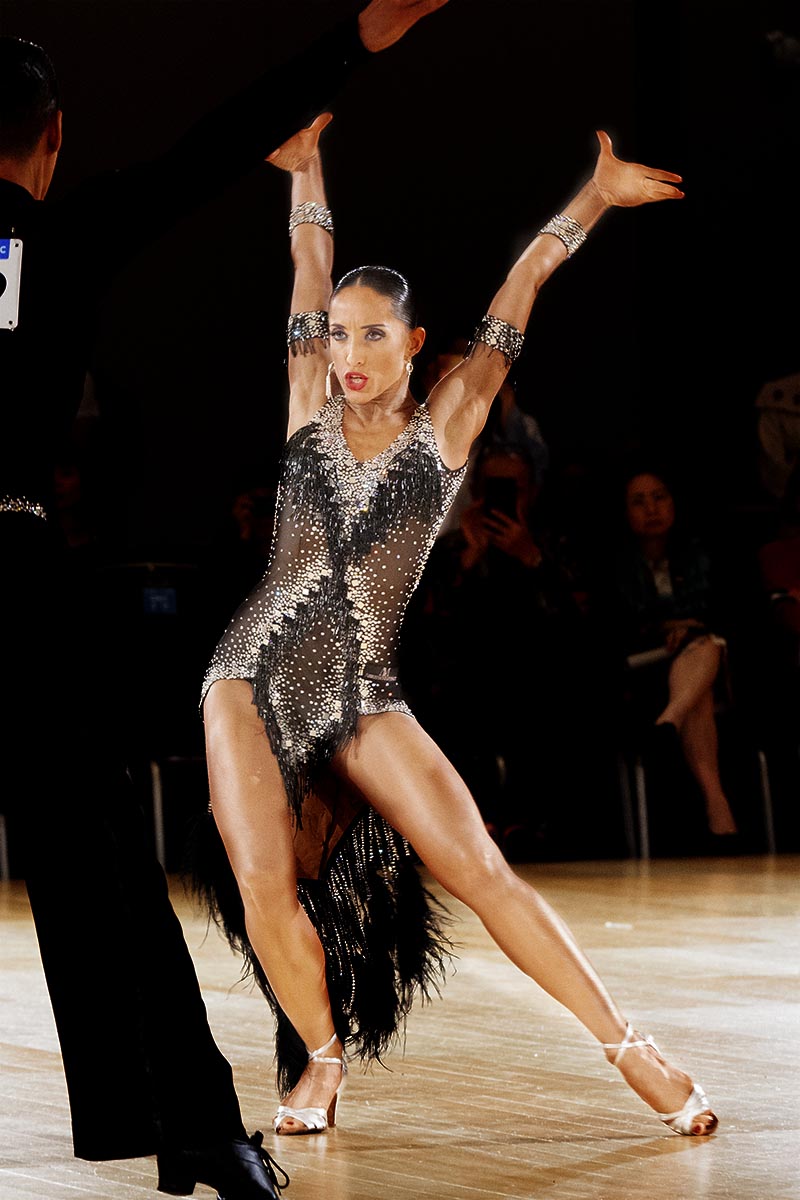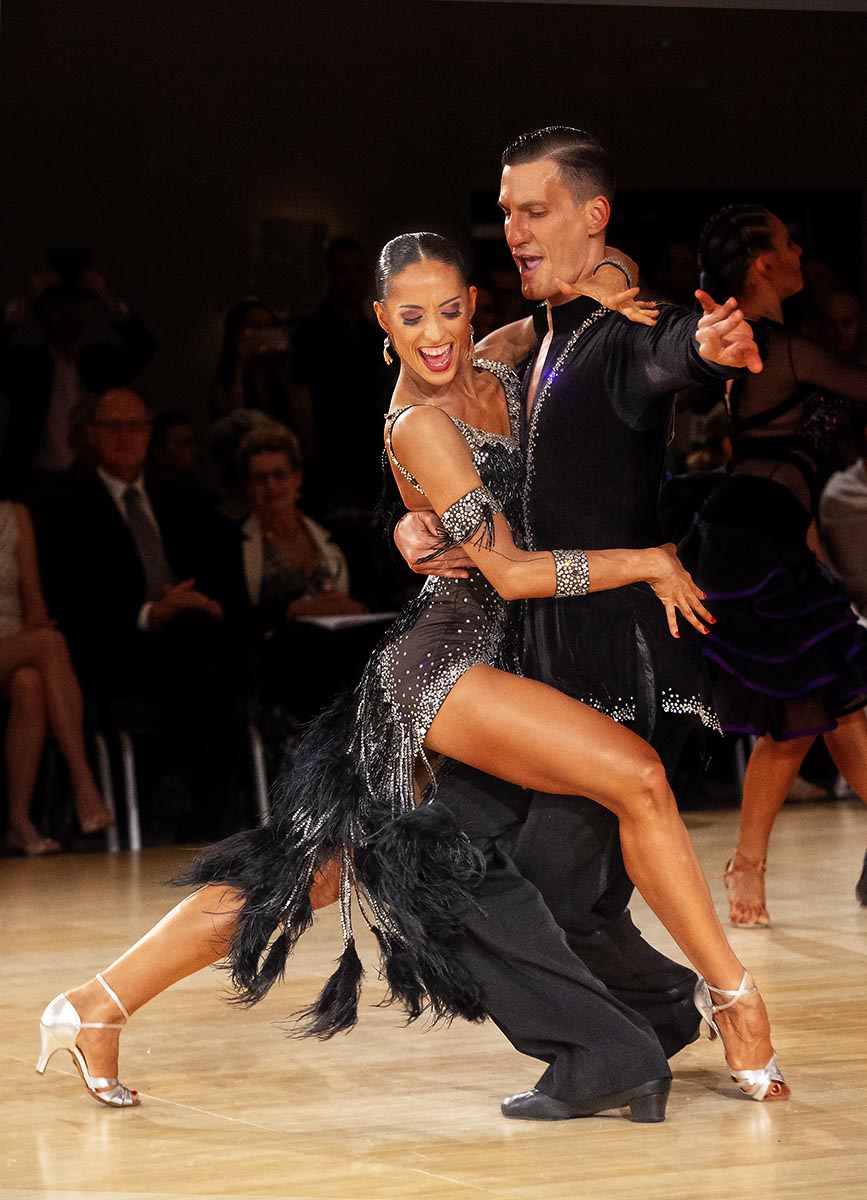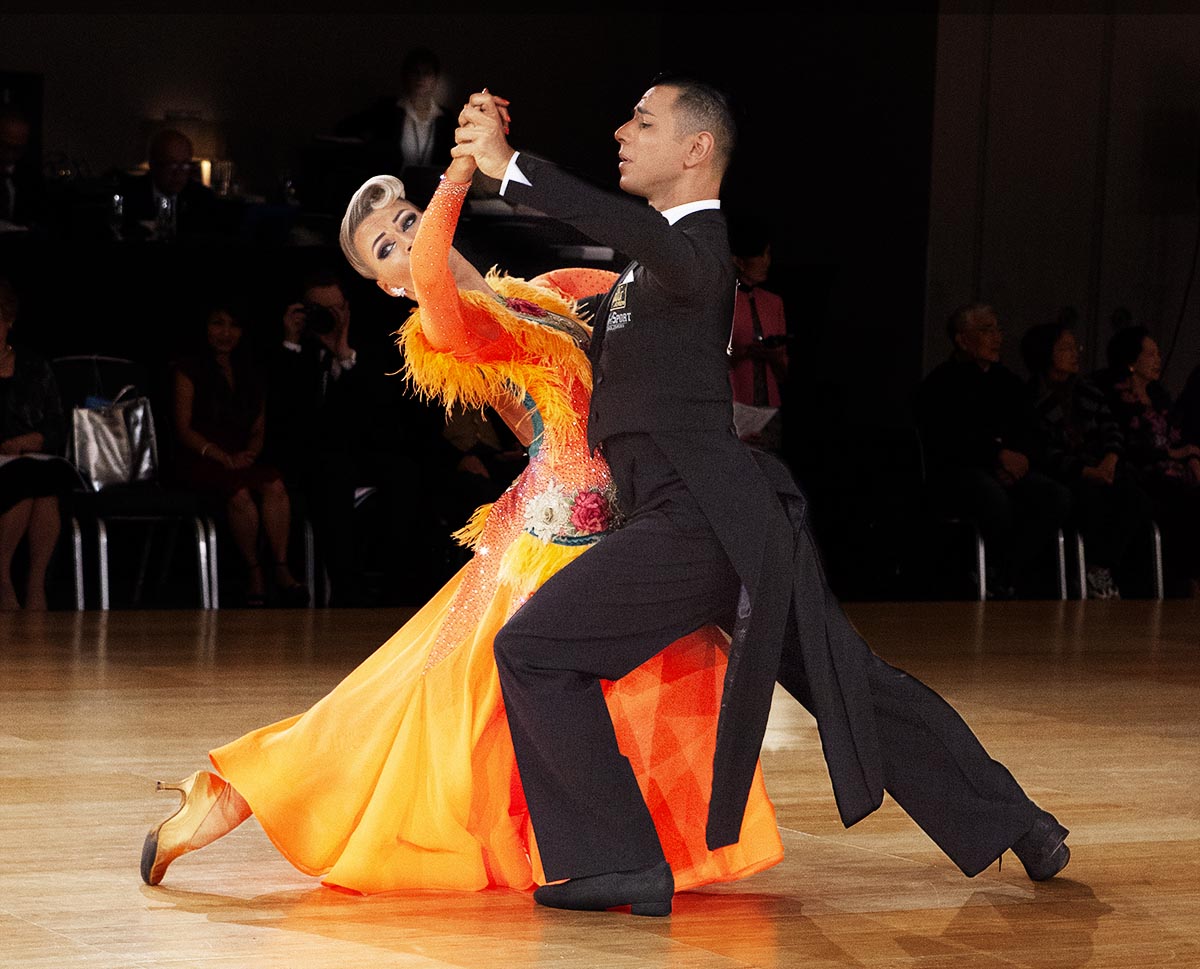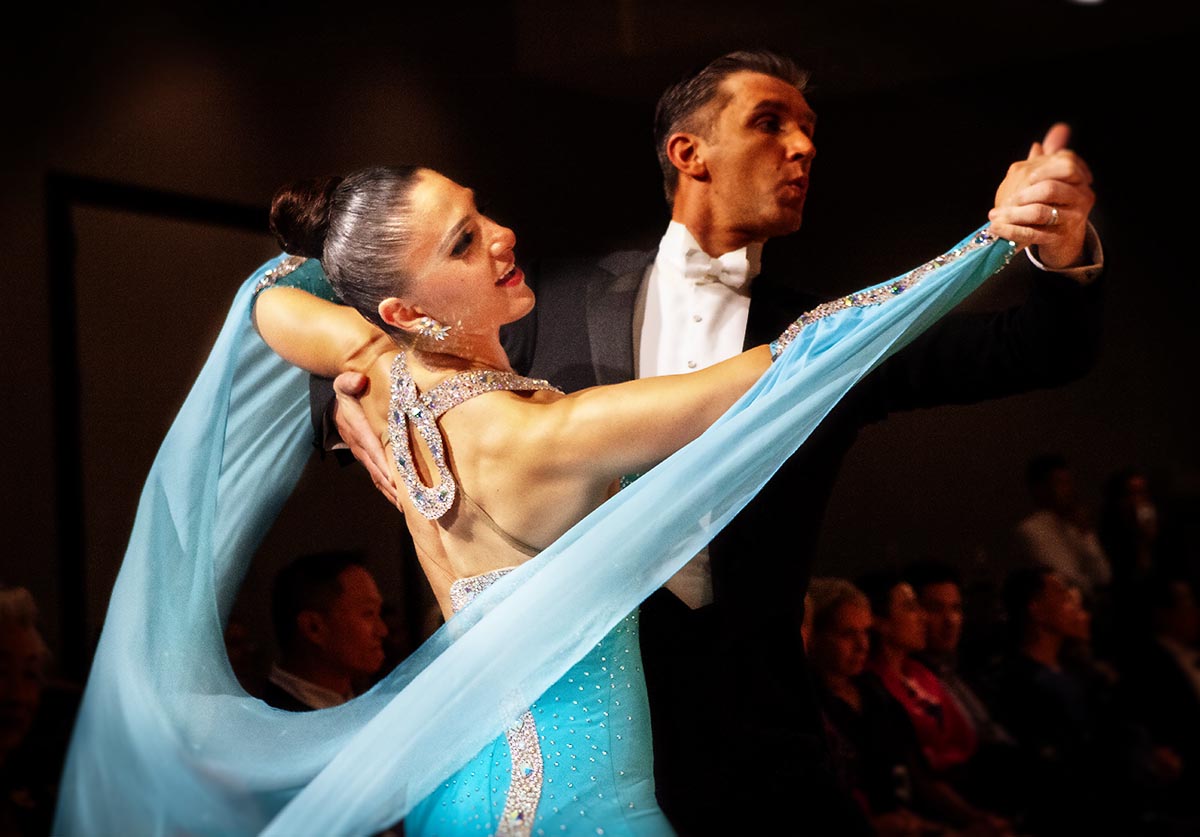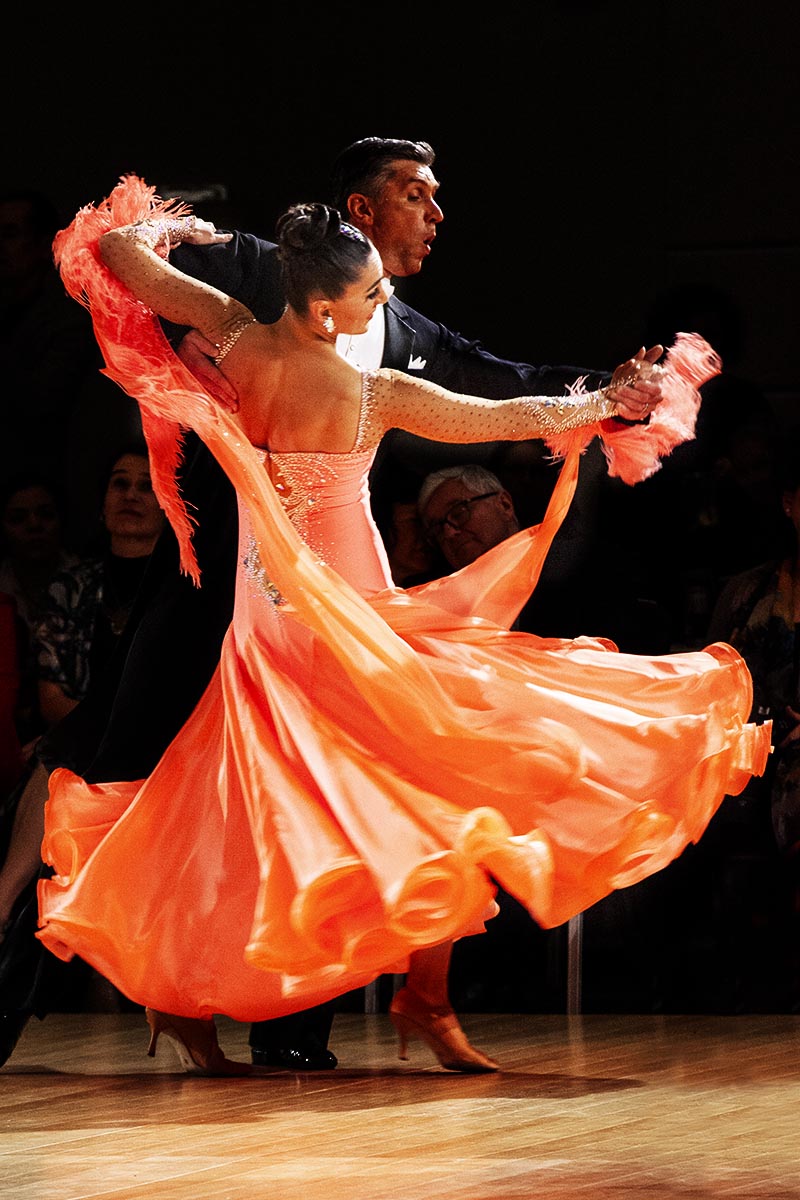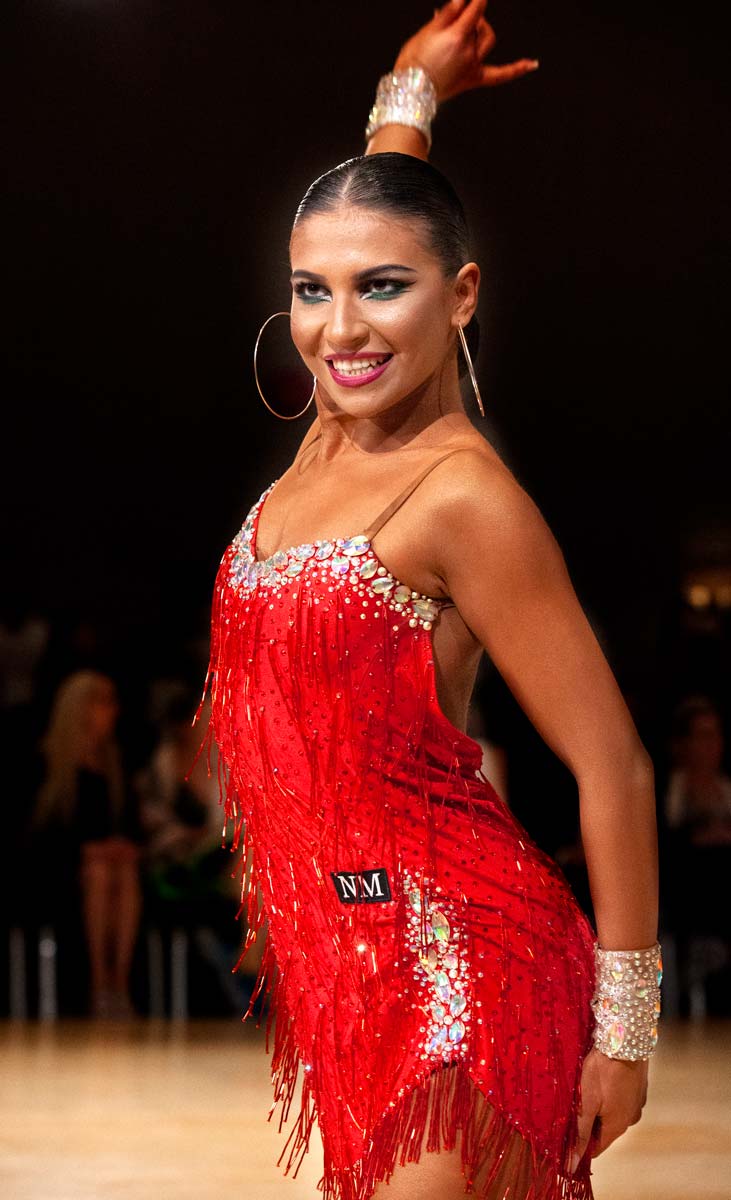Motion is captured in the gossamer fabric flowing around the dancers while music can be heard in the beauty of the form. The woman seems to be floating on the wind.
Dance is movement set to music. Those two things, movement and music are essential to the activity. Have you ever looked at photographs of people dancing? They usually look silly, awkward, somehow surreal. That is because the camera strips the essential elements out of the scene: the motion is frozen (in other words, no motion) and the music is silent (in other words, no music).
To convey these elements in a still photograph has to be an act of high art as you are trying to convey the very things your camera cannot do.
Let’s think about this for a minute. It is possible to see movement in a still photograph. You occasionally will find a photo of, say, water or clouds, where the movement somehow seems obvious. You know it’s not there in the picture but you feel it nonetheless. The image evokes memories of those things and part of that memory includes the impression of movement. The image excites in you that aspect of the action. It is not in the image but in the mind. And is that not the signature of art: to trigger recollections and feelings in the viewer to give an impression of the scene that is not actually there?
The same can be said of the music. Elements of the scene can evoke memories or impressions of the music that was there in the original event. Here, surely, is a test of the art in the photograph. Does it have the impact that the original event had on the photographer?
In two of the pictures of these dancers the details are sharp. There is motion in the image. Above, the dancers are in the process of stepping to the right almost seeming to be disappearing out of the frame. But my favorite of the three is at the upper left. This image suffers from focus and motion blur which are traditional means of imparting movement to an image. This and their walking step creates a powerful impression of motion. The lady is looking directly at the camera and the gentleman seems lost in the enjoyment of the dance.
So why have I been thinking about this. Well, Susan and I attended, again, the annual Snowball Classic dance competition. We attend this event every year and I have written about it before in these pages. It is an international ballroom dance competition here in Vancouver. This year we had tickets in the front row right on the edge of the dance floor.
When we go I always take my camera. It is an opportunity to capture wonderful images, but, it is also a challenge to capture the music and motion of the dance. This is where the craft of photography can become art, where the skill of the photographer sets artful images apart from simple pictures.
Susan often says that photography cannot be art because there is no skill involved. When she says this she is thinking about the incredible group of skills employed to create a fine painting. I think this is a common feeling among people. But I can tell you that there is a similar group of skills employed in the creation of a fine photograph: different but equally creative and difficult.
These Latin dancers seem to be moving all of the time! Latin is easier to photograph because, generally, Latin dances are reasonably stationary on the dance floor. Focus is easier. Look at the image on the left. This is dance!!! Even though it is a fast dance the dancers have time for style.
Consider this event. It is indoors with less than ideal lighting: strong overhead lights with little to fill in deep shadows on the faces. The light is dim and no flashes are allowed which challenges any camera. Add to this the fact that the action is fast and it is moving to and from the camera position which brings focus into the equation. In this set of conditions the photographer is challenged to capture images that encompasses music and the movement. All of the above is the reason you see very few good images of dancing unless in a studio setting.
The skill resides in the knowledge of camera bodies, lenses, ISO settings, focus methods, not to mention the follow up work in Photoshop or other program(s). Then there is the method of presentation be it on the internet, paper or canvas print.
A more nebulous factor is that of experience. As Henri Cartier-Bresson said, “Your first 10,000 photographs are your worst”. Like music, dancing, or any of the performing or visual arts, practice is everything. So it is in photography. What to photograph is a discernment that comes from being dissatisfied with thousands of your images.
The pictures I have included here are from a much larger collection created on those two evenings. There are others that you might find support my arguments better. There is no right or wrong here, only experience. These images are where my past photography history lead me. You would chose differently. That’s art for you.
It was a wonderful two evenings. We have been going to this event for 20 years and we will be there next year.
We are planning a Christmas trip right now and I am considering what camera gear I will carry. This is part of the skill, picking equipment that will bring home the images you want.
It is in these types of considerations that the skill resides. There is no perfect camera kit. It is all about balance and experience.



